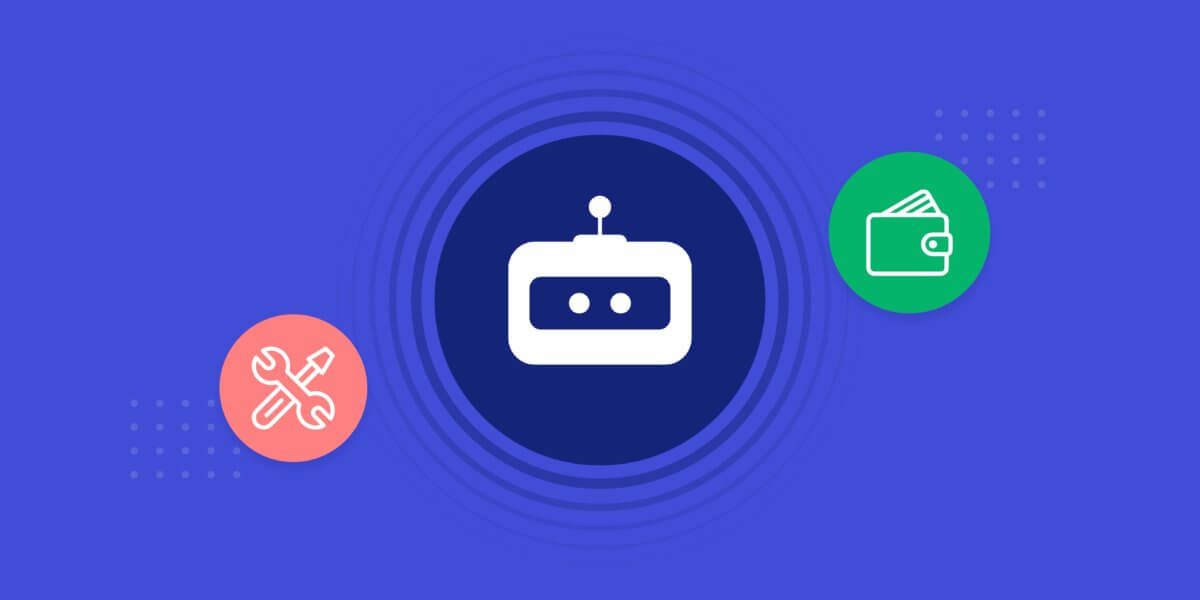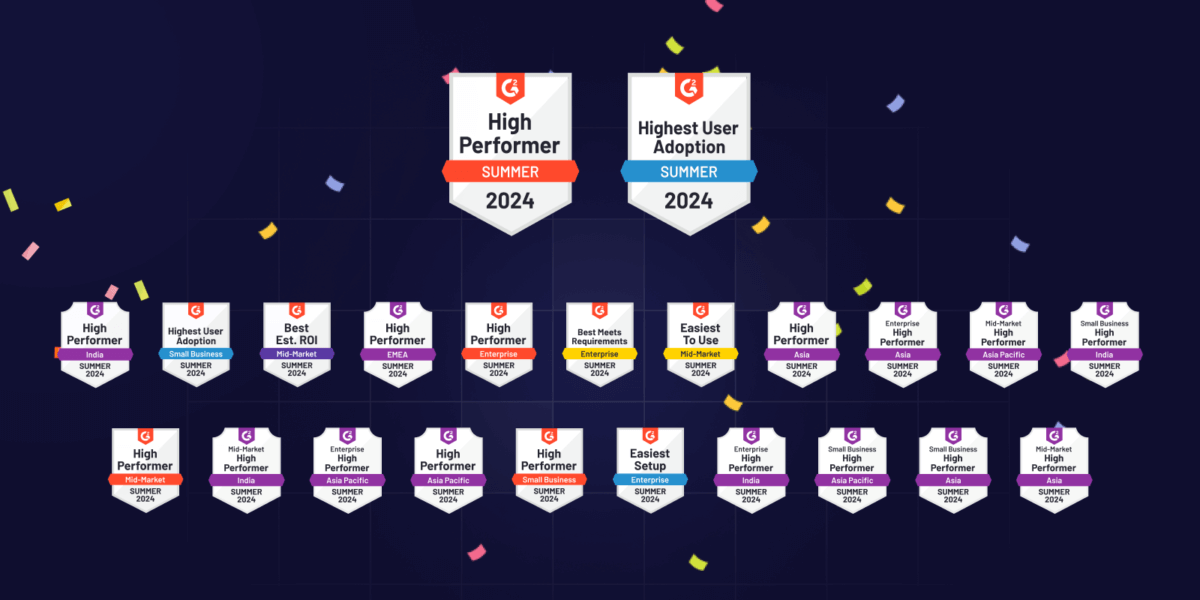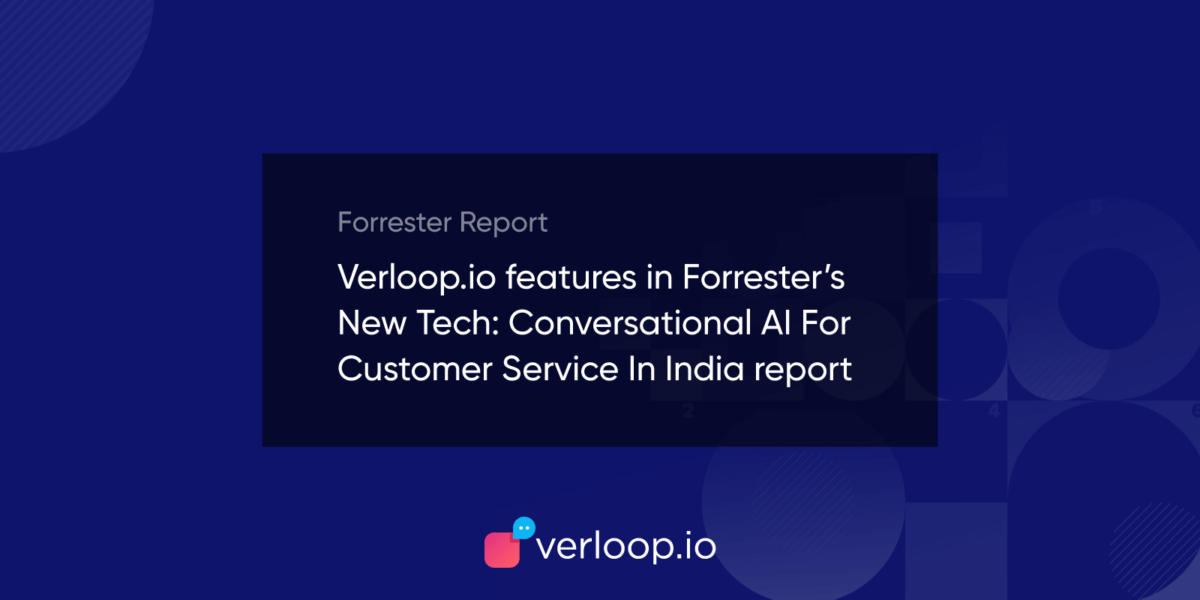12 Things to Consider Before Selecting a Conversational AI

12 Things to Consider Before Selecting a Conversational AI
In a world full of conversational AI chatbots, selecting the one best suited for your company can be difficult. To make this decision-making process more streamlined and easier for you, we list 12 things you should consider before investing in one.
Conversational AI is an emerging market. According to an Accenture survey, 56% of companies say it is driving disruption in their industry. While 43% of these companies said their competitors are already implementing this technology.
It comes as no surprise that over the last five years, interest in chatbots has grown 5x (as per Google Trends). You too are probably considering getting on the bandwagon and that’s why you are here.
But does your company need a conversational AI chatbot? And if yes, do you know what aspects to consider before buying one yourself? We’ll answer these questions for you in this post.
Let’s begin with the first big question.
Do you need a chatbot?
It’s a simple yes or no question. Just because everyone around you is getting one, conversational chatbots might not be for everyone.
So the first question you should ask yourself is ‘does your brand even need a conversational AI chatbot?’
Well, having a conversational chatbot on your website will definitely reap many benefits. However, it requires a one-time investment and it wouldn’t make sense if the chatbot doesn’t give you appropriate returns.
You need to analyse your customer engagement and answer the following questions to come to a conclusion.
- Is your company struggling with customer engagement metrics?
- Do you lack the scale or quality customer support?
- Are your customer support agents overburdened and have a huge backlog?
- Are your customers leaving the website without filling forms?
- Do you see fluctuating support requirements frequently?
A conversational chatbot, as the name suggests, helps you converse with your customers and improve their engagement with your brand.
A conversational AI platform can also help you automate a large chunk of your support queries. To be specific, 80% of the questions your agents get are repetitive and similar. They can be automated easily.
But if you answered no to all the questions listed above, you probably don’t need a conversational chatbot at the moment.
So before you even begin, first find out if you need to invest in a conversational AI or not.
Psst: Did you know that 75-90% of support queries are projected to be handled by bots by 2022? (CNBC).
If you feel it’s worth investing in conversational AI chatbots, read on further.
12 Things to consider before selecting a conversational AI
Next, you need to ask ‘What are the things to consider before selecting a conversational AI chatbot?’ Below we list 12 questions for you and then go into details of each of the following factors.
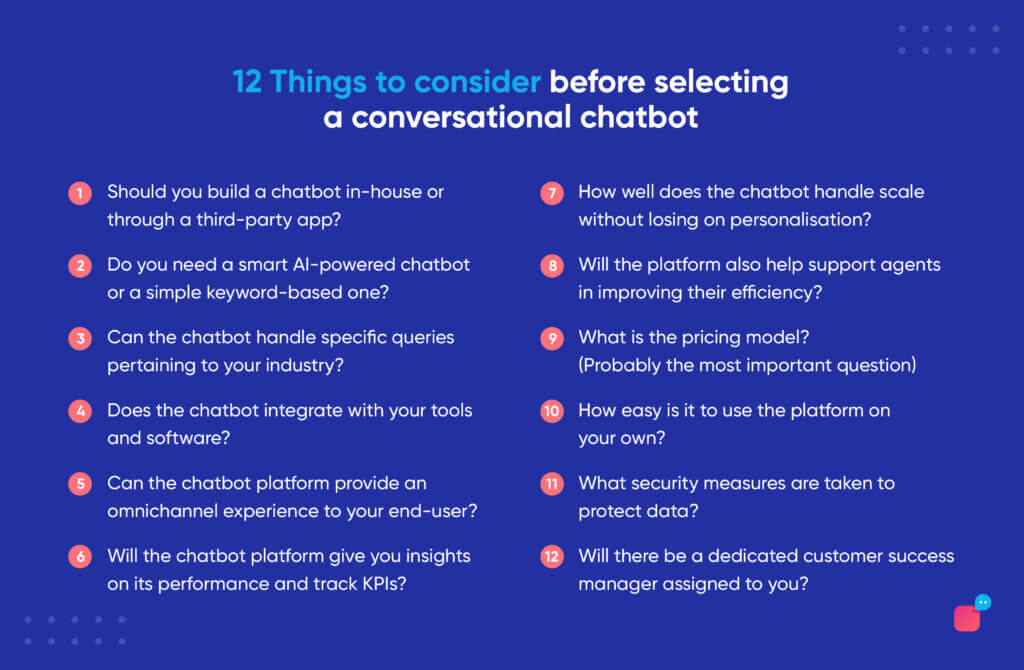
These are important questions to answer. According to Accenture Digital Chatbot Report, some of the top challenges bot supporters have faced while implementing chatbots are:
- Lack of skilled talent to develop and work with bots. (65%)
- Deployment cost (49%)
- Cost to acquire/purchase (46%)
- Data privacy & security (42%)
- Self-learning/ Self-aware abilities (42%)
Clearly, these need to be overcome by understanding what your requirements are. Now let’s get into the details of our 12 questions.
1. In-house vs. Outsource
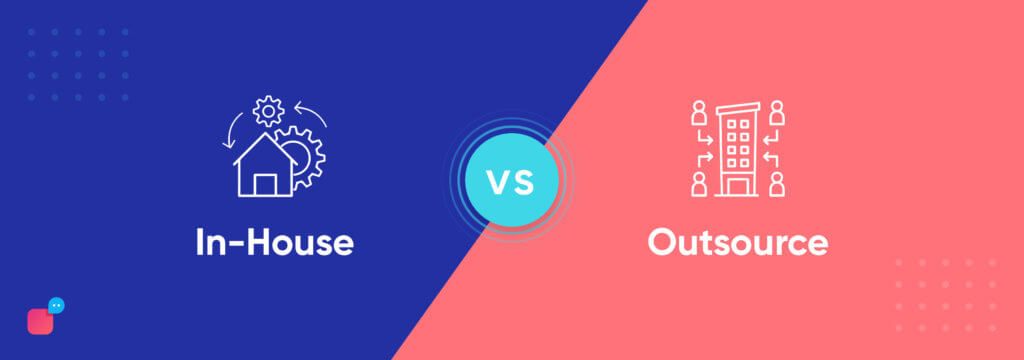
Several companies want to build their software in-house. And there are good reasons for it – you have full control over the data, how it functions, and most importantly, you have the flexibility to quickly fix bugs.
However, when it comes to conversational AI, there’s one important factor you need to consider: ML data.
An AI-powered chatbot understands your customer’s question, processes it and responds with an accurate answer because of its ML training. The more you train the AI with data (training data), the better it will respond to customers.
To train the conversational AI, you’ll need a dedicated team of ML scientists and more importantly, training data. With a lack of training data, the algorithm will not be robust enough and might not cover all use cases.
If you are selecting a conversational AI chatbot and build it in-house, you will probably have to hire new Data Scientists or repurpose your current team. In addition to this, you will have to buy data for training until you get enough data from your own conversations.
On the other hand, a third-party provider (TPP) that provides conversational chatbots works with a large number of companies across industries and use cases. They will have lots of data covering plenty of use cases. They also have a dedicated ML team training these AI algorithms regularly to improve their performance.
Trained AI-powered chatbots provide quality responses immediately. So while selecting a conversational AI chatbot, analyse if you have the bandwidth and data to create it in-house or not.
2. Artificial Intelligence
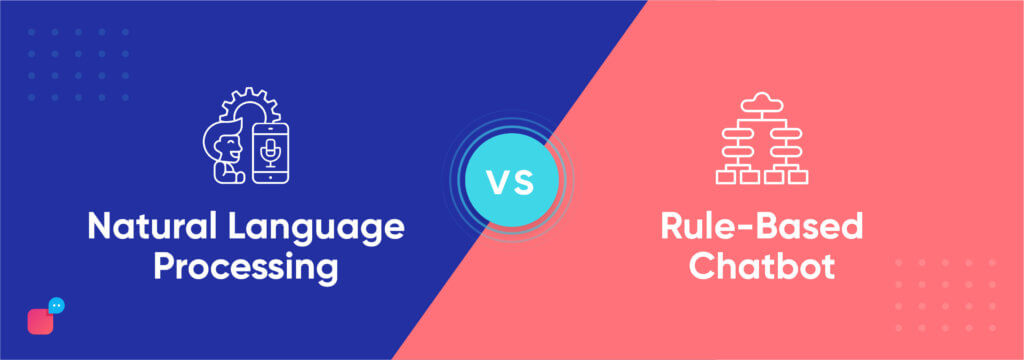
Chatbots can be of two types: rule-based and AI-powered.
Even though both conversational AI and regular chatbots aim to engage customers and respond to their queries, the way they do it and the results they see differ drastically.
Rule-based chatbots work on a bound system and are defined by a set of commands and keywords to interact with customers. If the user doesn’t use one of the defined KWs, it will not understand the question and therefore not respond accurately. Second, they are not self-learning and hence, every now and then, you’ll need to manually add new KWs to it.
However, they are a good option if the user experience is not your top priority and you want the chatbots to handle only a limited number of questions and connect the user to a live agent.
On the other hand, the AI-powered chatbot takes automation to the next level. It uses AI, ML, Predictive Analysis and Neural Networks to understand users better and respond in a natural language.
Conversational chatbots are powered by AI that understands the customer’s intent, use past data to understand the context and provide a personalised answer to them. Irrespective of where your user starts a conversation, the conversational chatbot can continue context from one channel to another.
Selecting a conversational AI over rule-based chatbots has another advantage. They intelligently transfer chats to the right agent. Aspect Customer Experience Index showed that 86% of customers expect chatbots to always have an option to transfer to a live agent.
Based on the context, the AI hands over the chat to an agent who is best suited to answer the question. It ensures that the customer doesn’t repeat their question and the agent gets all the information they need. These chatbots play an important role in conversational UX.
3. Industry Expertise
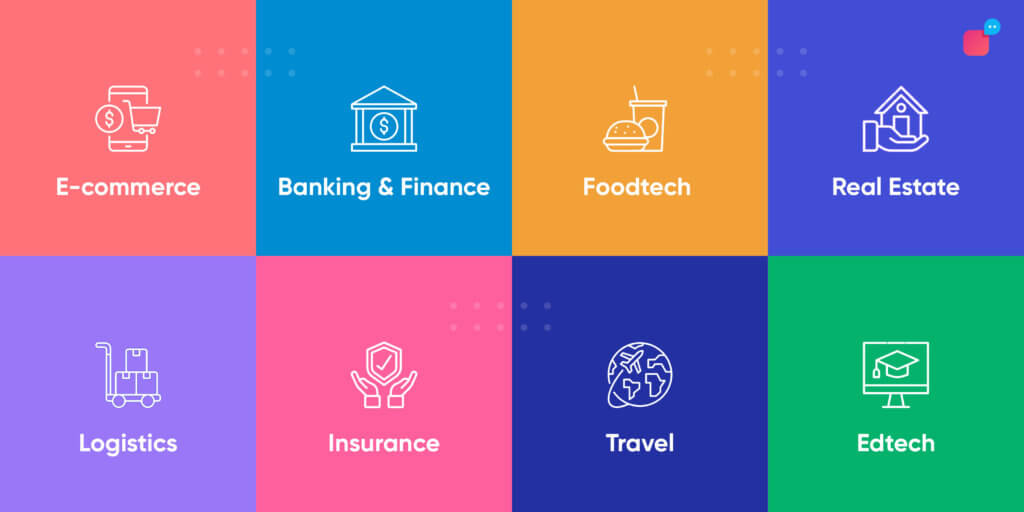
Not all industries are equal. They have different use cases and requirements.
A dataset for e-commerce is way different from real estate which varies largely from a dataset for travel or banking. For example, in e-commerce, people are frequently asking for order status or refunds and real estate users want to schedule meetings for site visits or get more information on the property.
Hence, if you are going with a TPP, you’ll need to check if the provider has a lot of training data for your specific industry. A chatbot provider that has several clients but in just one industry – may not be able to provide the kind of conversational coverage your brand desires.
To get a better idea of the industry dataset from your chatbot provider, consider asking them the following questions —
- How many clients are there for your industry?
- Are the clients handling support queries at your range (small businesses vs mid-sized businesses vs enterprises)?
- What is the prediction accuracy for queries in your industry?
This will give you a good understanding of how well the conversational chatbot will perform for your business. Based on this data, you can consider buying or rejecting this chatbot provider.
4. Integrations
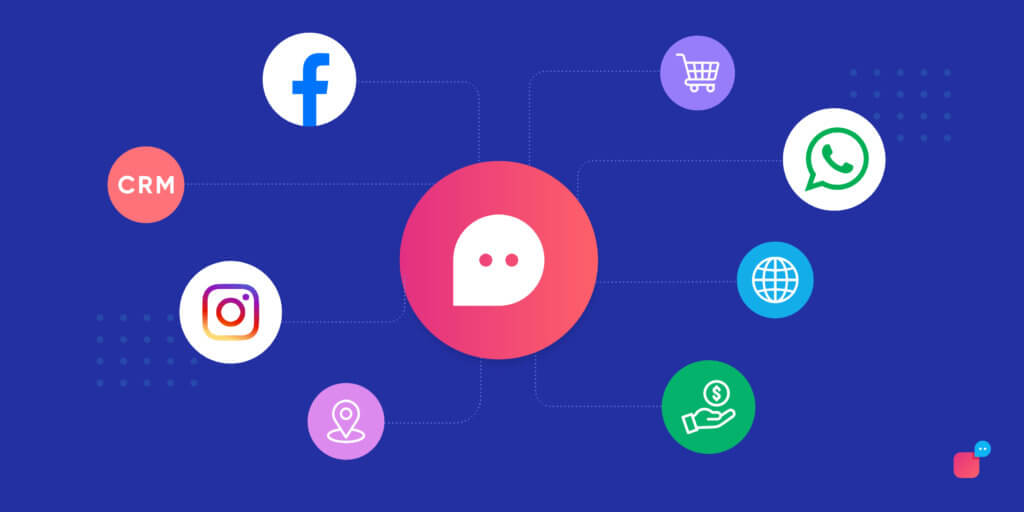
Delightful customer experiences and integrations go hand in hand.
Think of a conversational platform like a home. A house is made of many rooms. And each room, be it a bedroom, a kitchen or a living room, has an important role to play. But only when all these rooms come together, they become a home.
Similarly, your tools are all working with data in silos. It could be your CRM, your sales/marketing tools, payment channels or engagement channels (such as WhatsApp or Social Media platforms.) Individually, they are good and ensure a smooth customer experience. But when they come together and exchange data with one another, they take customer experience a notch up.
For example, a conversational chatbot platform that’s generating real estate leads from your website is useless if it can’t push that lead data into your CRM. Similarly, an e-commerce chatbot that’s handling customer queries is of no use if it can’t pull tracking data from your OMS or let your users purchase from the same channel.
Your brand has multiple customer touchpoints and uses hundreds of software providers to track, engage and service your customers. If a conversational AI platform doesn’t operate in sync with these services, it’s going to cost your brand time, money and resources.
Ensure your chatbot provider integrates with a wide suite of tools. Ask questions about future integrations, timelines, and how receptive they are to custom requests.
5. Omnichannel Experience
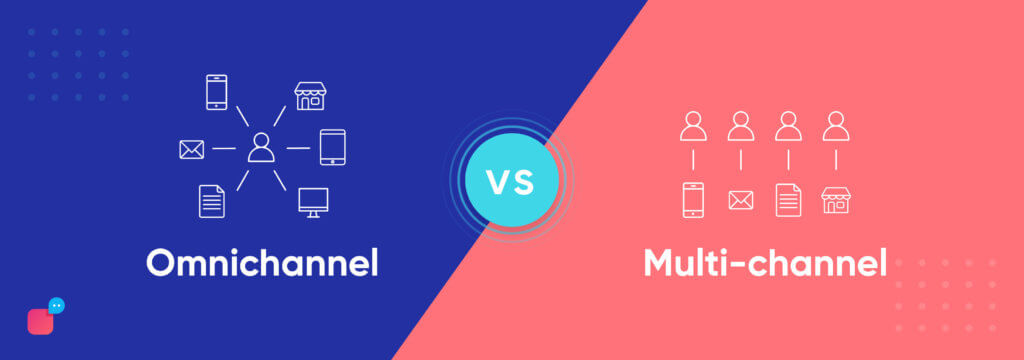
There’s a difference between omnichannel and multichannel customer experience. And while considering a conversational AI platform, it’s essential to find out what kind of experience you want your chatbot to provide.
Let’s begin with multichannel experience. As the name suggests, your chatbot is present on multiple channels to engage with your customers. Be it your website, mobile app, social media pages or instant messaging apps, you can interact with customers on multiple platforms. However, these are just multiple touchpoints and do not carry forward context from the other channel.
On the other hand, an omnichannel experience is when the chatbot platform syncs data with other channels and understands the context from a previous interaction, which could have happened anywhere, in-store, on WhatsApp, on the Facebook page or over a call. There is continuity to the conversation.
Both systems work differently and serve different purposes. Hence, it’s important to define what you want the chatbot to achieve before selecting a conversational AI for your business.
Suggested Reading: Guide to Omnichannel Support Automation
6. Dashboard and Analytics
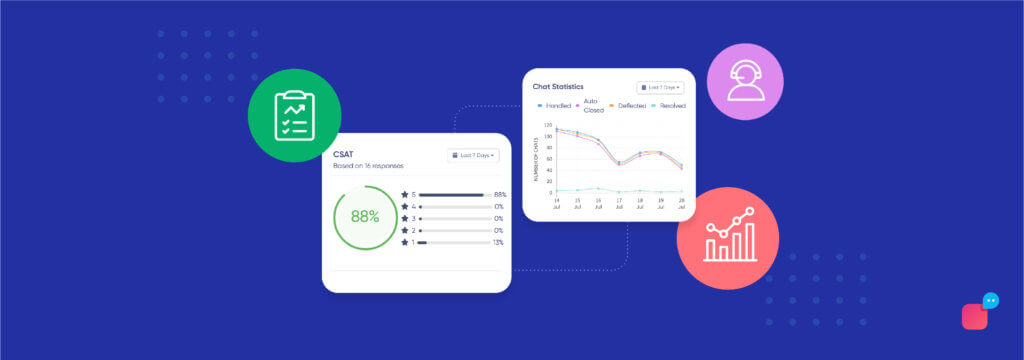
When extrapolated properly, conversational AI is one of the world’s most powerful behavioural analysis tools.
Simple decision-tree heatmaps tied to complex keyword mapping allow brands to have unprecedented insights into the way their customers think, act and behave.
So what should you look for when comparing analytics amongst prospective providers?
A simple rule of thumb is that your analytics should appear as a funnel. At the very top – a massive data dump. At the bottom – easy to read visual representations of said data. In between, reports based on your specific requirements.
A dump usually presents itself as a .csv file filled with those days/weeks/months chat logs. This massive trove of raw data gives you a lot of free reigns. You can sit with your team and paint broad strokes to identify general trends or dig deep to observe even the finest details.
This data dump should be paired with mobile-friendly graphs and bars – ideally on a dashboard. This one-glance interface keeps you posted on key metrics that you define as important.
When selecting a conversational AI chatbot, make sure to ask your prospective providers to send you templates of these reports, dumps, and dashboards.
7. Scale and Personalisation

Scale is very important for companies. If you are a young early-stage startup, you might get fewer queries but don’t have the bandwidth to handle them. But you also need to make sure the conversations are personalised as that’s what people look for in smaller companies.
If you are a big enterprise, you have thousands of queries every day and don’t have the bandwidth to answer all of them without adding new agents to the system.
While most chatbots can handle multiple queries simultaneously, only a few can handle them without crashing the server or worse, showing a lag in response. (Yes, no service is better than slow service.)
While the scale is very important to ensure the customer experience is not affected, it’s also crucial to add personalisation in the customer interaction. It could be having previous chat history, speaking in the customer’s preferred language or sharing recommendations based on their past behaviour.
There’s no easy way to determine whether a provider can handle your scale. Or, if in fact, your scale is too much for them at all.
While selecting a conversational AI chatbot, talk to them about what their message load (in an hour) is. Quiz them about who their largest existing customers are and how many conversations they handle in a specific time frame. Get more specific and ask about concurrent message loads, latency metrics, the number of concurrent active agents and how many outbounds they can process.
Most importantly, ask about their future plans to scale up to understand if the vendor can keep up with your growth.
8. Agent Assist

A rule-based chatbot only answers customer queries but a conversational chatbot also assists the agents in answering questions.
So when you are considering a conversational platform for customer support, ask how it assists the agents in improving their productivity.
Agents are crucial to your customer support. While a conversational chatbot will deflect 80% of frequently asked questions, the agents take up complex queries that require special attention. When a query is handed over to them, they need the context and all relevant information to answer customer queries.
Conversational chatbots can assist agents in multiple ways:
- View of previous chat history
- Option for quick replies to frequently asked questions
- Ability to take notes, adding tags, etc before closing the conversation
- Smart-plugins to show customer profile with location, language preferences, and purchase history
- Context of the current chat to continue the conversation
With an agent assist feature, the customer experience increases multifold. They are equipped with the right tools to resolve queries quickly and accurately. It saves their time and allows them to take up more tasks that add to increasing a company’s revenues.
So while selecting a conversational AI chatbot, ask your provider what features they have that empower agents to reduce the average ticket handling time and improve their efficiency.
9. Pricing
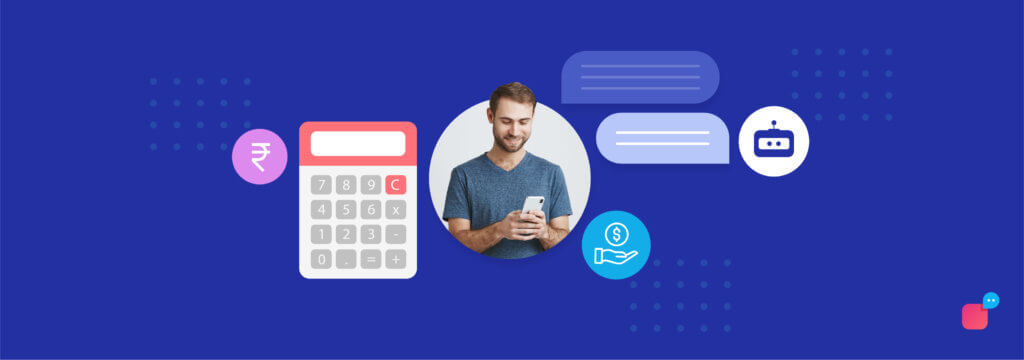
Realistically, pricing is going to be the most important aspect of your decision-making process.
Different vendors use different pricing strategies based on a variety of factors. And these strategies often make a huge difference in how you’re billed.
Keep in mind that there are two aspects to chatbot pricing – a flat fare + surcharges for add-ons. With that in check, there are three basic methodologies to calculate pricing for a conversational chatbot.
- Cost per message: ideal for easy-to-close interactions.
Cost per message is the easy one here. A message is defined as a string of alphanumeric variables exchanged between your brand and the end-user. You’re charged a certain amount for each message, and that figure is usually in cents or a similar nominal denomination.
- Cost per chat/conversation: ideal for interactions with lots of back-and-forths.
A conversation is a collection of messages. It doesn’t matter how many messages are in a conversation, cost per conversation charges you for the number of conversations you have in a specific timeframe. This pricing is usually tiered in nature.
- Cost per customer/contact/user: ideal for a small, dedicated user base.
Cost per customer is a bit tricky. Often used by enterprise-style chatbot providers, cost per customer means that you pay for each unique customer that you interact with.
While vendors may use other synonyms, they’re likely talking about one of these three umbrella terms. In addition to this, the service provider might charge you on the number of agents using the chabot.
Identify what kind of pricing works for your brand and negotiate based on that.
10. Ease of Use
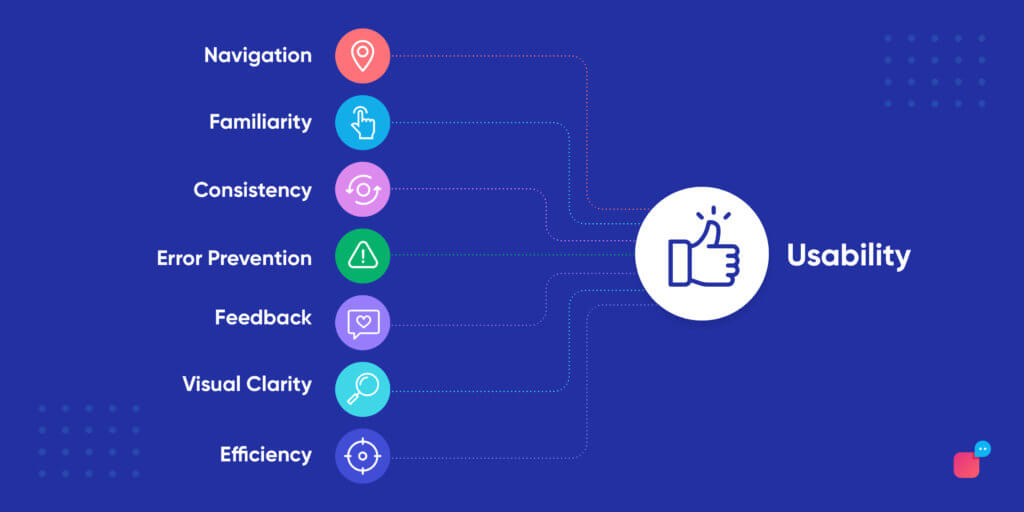
At the end of the day, your customer support team is going to be using the platform. You will be building recipes, answering questions, and engaging with customers at various points of their journey. How easy a platform for you and your team to work with becomes a very important factor.
While a third-party provider will implement all the initial requirements from your end, you will still have creative control over the in-house team to ensure your brand’s success. This is why the DIY-ability of the platform is an important factor to consider while selecting a conversational AI chatbot.
Being able to edit your brand’s bot by yourself allows for quicker turnaround time, easier experimentation, and better personalisation. You’d want a UI that’s easy enough for anyone in the company to use.
For this, you’ll need to get your hands dirty during the sales process. If that’s a bit out of reach, ask if you can see a demo of the bot building process to gauge the platforms’ ease of use.
11. Security
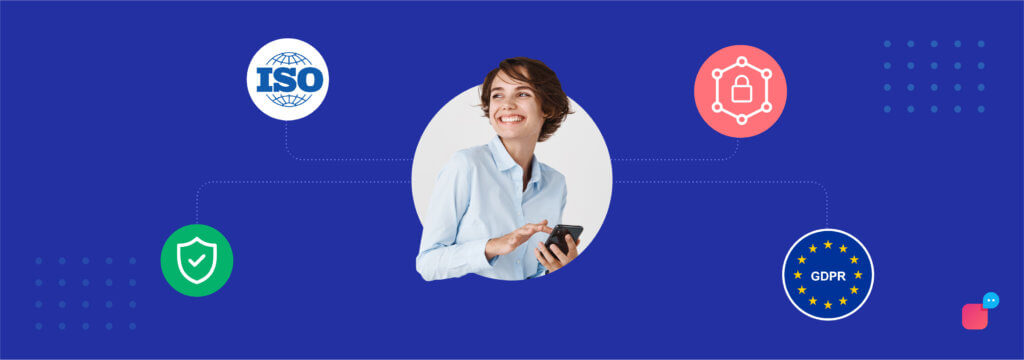
You cannot compromise on security.
Customers are sharing a lot of information with you while conversing on the chatbot. Protecting their data should be your utmost priority.
When it comes to customer data, many countries have come up with data regulations that ensure companies follow the minimum guidelines to secure user information from threats.
Security is important for businesses across industries. Banking, e-commerce, real estate, edtech, travel, insurance or any other industry your company falls under. Users are sharing sensitive information with you that needs protection.
Threats can come in many forms as well. It could be internal (from within your company) or external (like hackers). Being prepared for the worst-case scenario is the best way to handle your user’s data.
When you are selecting a conversational AI chatbot, check what steps they have taken to ensure security. What data regulations they are following? How they are avoiding data leaks? Where are they storing data? etc.
12. Customer Success Manager
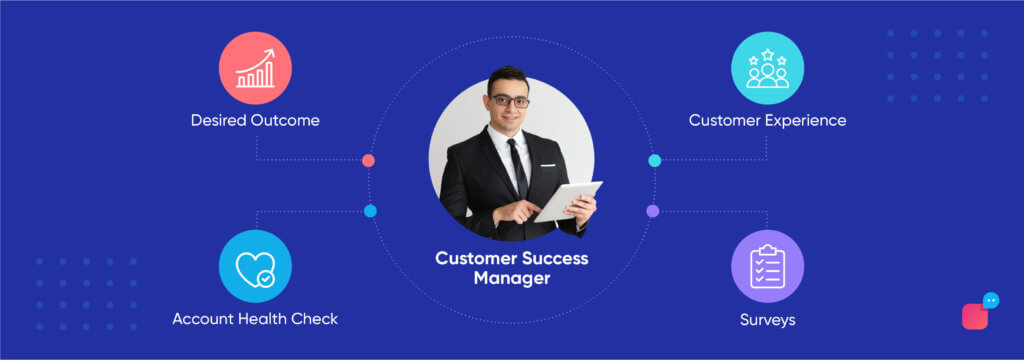
No matter how easy the conversational AI platform is to use by yourself, you’d still want a dedicated customer success manager to handle your account.
During your decision-making process, remember that you’re choosing a good success manager just as much as you’re choosing a good conversational chatbot.
A conversational AI provider that doesn’t give you a customer success manager should be taken off your list immediately. Why?
A good customer success manager is your walking, talking key performance indicator. They’re charged with understanding your requirements, creating an action plan, onboarding your brand onto the platform, tailoring bespoke solutions for you, monitoring your progress and helping you optimise your flows to see maximum ROIs.
Hence, having a customer success manager can make or break your customer experience.
The way forward: Selecting the right and best conversational AI
While it’s true that adopting conversational chatbots has many advantages, including a positive impact on your revenues, it does require a small one-time investment from your end. However, in the long run, it has a high ROI, both monetary and experience-wise.
An MIT Technology Review shows that nearly 90% of respondents said that they’ve registered measurable improvements in the speed of query resolution. Out of these, over 80% also noted enhanced call volume processing using AI.
According to Accenture Digital, 57% of businesses claimed that conversational chatbot delivers large ROI on minimal investment. You can say it’s like purchasing a house. You need to consider many things before selecting a conversational AI, but once you’ve decided, it’s a long term commitment. Hence, select wisely.
Verloop.io is a leading provider of conversational AI for customer support. Our clients have seen an increase in customer satisfaction, improvement in agent productivity, scale and efficiency in handling customer queries and also a big ROI after implementation of our chatbot for their customer support. In fact, some of them have moved their entire support to chat service only.
If you are looking for a conversational AI chabot, check out our platform for yourself by scheduling a demo now!





